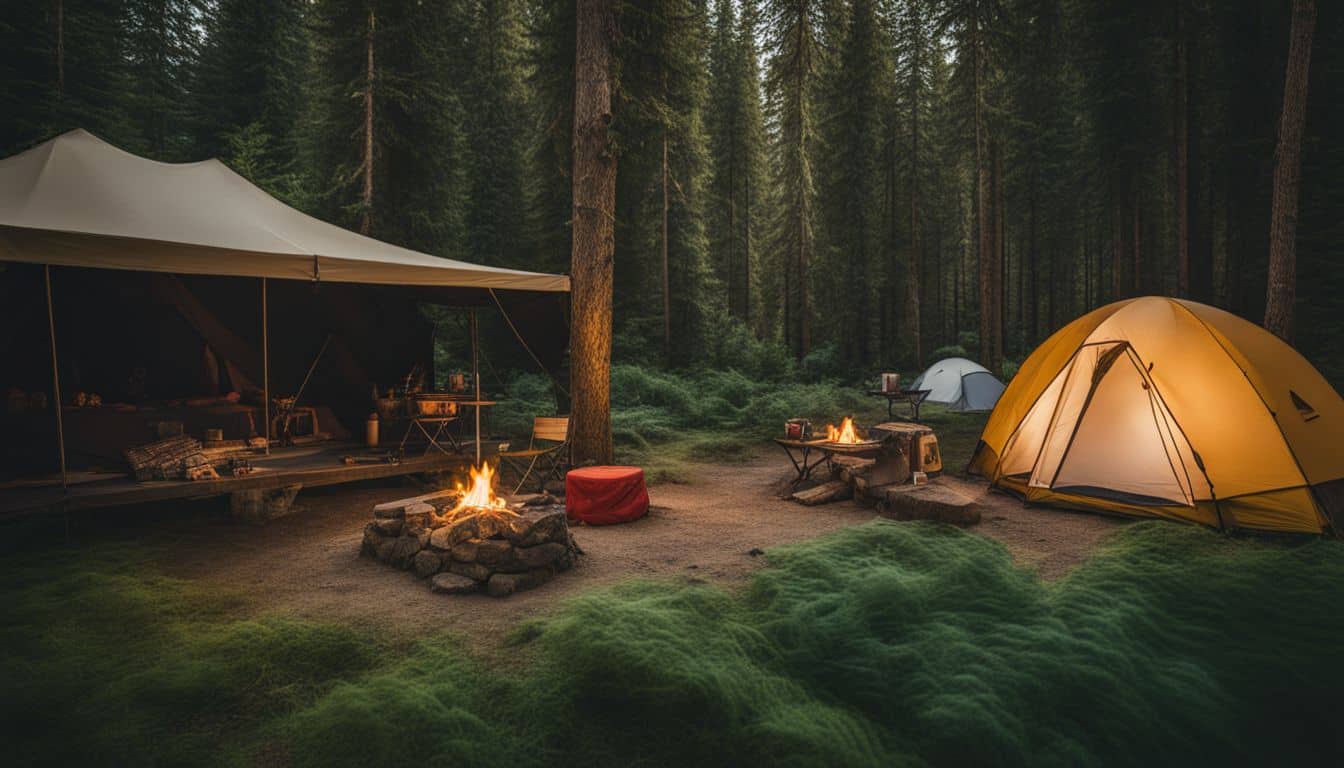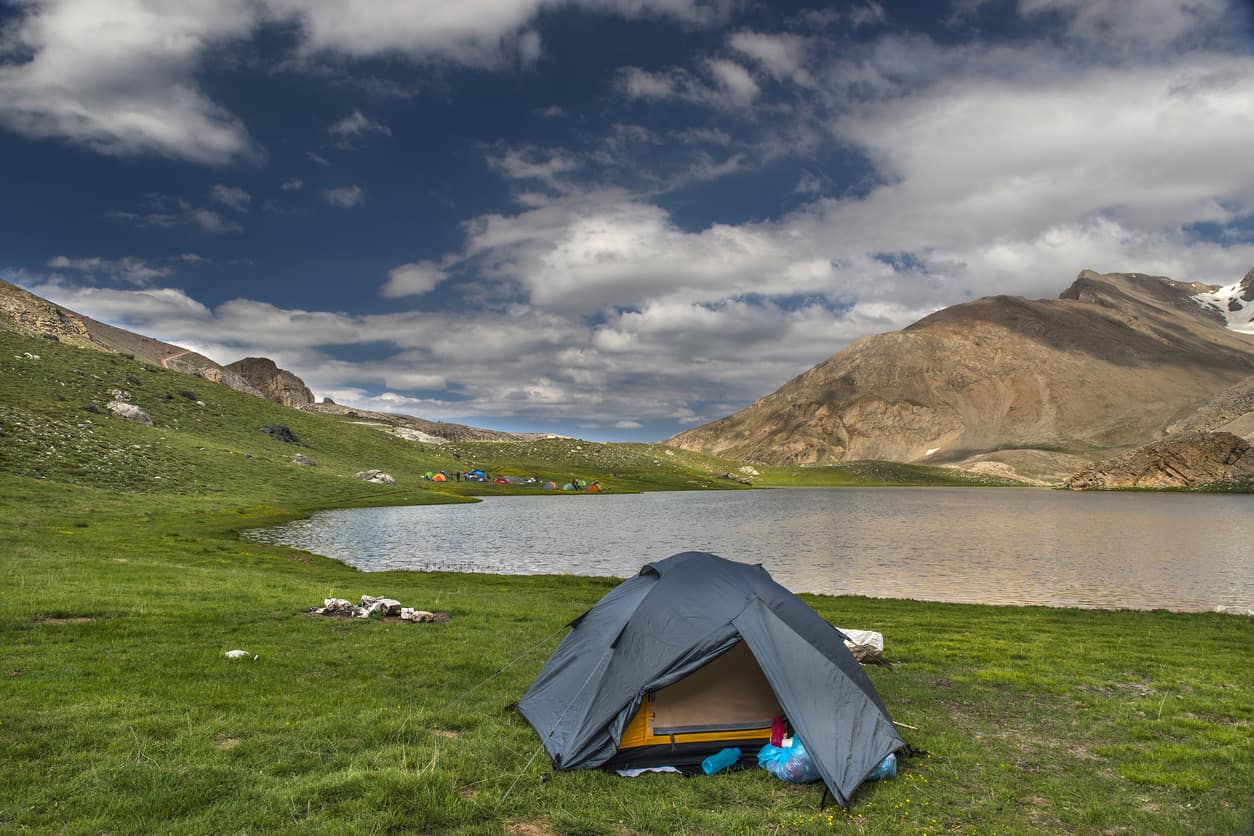Dispersed camping, also known as wild camping or boondocking, offers a unique and immersive outdoor experience. However, it also comes with additional responsibilities and safety considerations. Here are some key tips to ensure a safe and enjoyable dispersed camping trip:
Plan and Prepare Thoroughly
Before embarking on your adventure, research the area thoroughly, including weather conditions, terrain, and potential hazards. Inform someone of your plans, including your expected return date. Bring appropriate gear for the conditions, including emergency supplies. Ensure your vehicle is in good condition and suitable for the terrain. Thorough preparation is the foundation of a safe dispersed camping experience. Study topographic maps and recent trip reports to understand the landscape and any challenges you might face.
Create a detailed itinerary and share it with a trusted friend or family member who can alert authorities if you don’t return as planned. Pack versatile gear that can handle unexpected weather changes, and always include a well-stocked emergency kit. If you’re driving to your campsite, have your vehicle serviced before the trip and carry basic repair tools and spare parts.

Choose Your Campsite Wisely
Look for level ground away from potential hazards like dead trees or flash flood areas. Camp at least 200 feet away from water sources to protect both the environment and yourself. Be aware of your surroundings and potential wildlife activity in the area. Selecting an appropriate campsite is crucial for both safety and environmental preservation. Avoid camping under lone trees or in dry riverbeds, which can be dangerous during storms.
The 200-foot rule from water sources helps prevent contamination and reduces your impact on wildlife that depends on these water sources. As you set up camp, scan the area for signs of wildlife activity, such as tracks or droppings. This can help you avoid unwanted encounters and ensure you’re not disrupting important animal habitats or corridors.
Practice Fire Safety
Check local fire regulations and fire danger levels before starting any campfire. Use existing fire rings when available, or create a safe fire pit if necessary. Keep fires small and manageable, and never leave them unattended. Fully extinguish fires before leaving your campsite or going to sleep. Fire safety is paramount in dispersed camping areas where help may be far away. Always check current fire restrictions, as these can change rapidly based on weather conditions.
If fires are allowed, choose a spot away from overhanging branches and clear a wide area around your fire pit. Keep your fire small – it should be no larger than necessary for cooking or warmth. When extinguishing your fire, douse it thoroughly with water, stir the ashes, and repeat until the embers are cold to the touch. Remember, a responsible camper always leaves their campsite as if they were never there.
Secure Your Food and Waste
Store food in airtight, odor-proof containers or bear canisters. Keep food and scented items in your vehicle or hang them from a tree away from your campsite. Pack out all trash and dispose of it properly. Proper food and waste management is essential for both your safety and the protection of wildlife. In bear country, use bear-resistant food canisters or hang your food at least 10 feet high and 4 feet away from the tree trunk. Remember that “food” includes all scented items, including toiletries, so store these carefully too.
When it comes to trash, follow the “pack it in, pack it out” principle. Carry sturdy trash bags and be prepared to take all your waste with you when you leave. This includes biodegradable items like fruit peels, which can take years to decompose in some environments and can attract wildlife to campsites.
Be Prepared for Emergencies
Bring a well-stocked first aid kit and know how to use it. Carry a reliable means of communication, such as a satellite messenger or personal locator beacon. Be familiar with basic wilderness first aid and survival skills. Emergency preparedness is crucial when camping in remote areas.
Your first aid kit should include items specific to your needs and the environment you’re in, such as treatments for allergies or altitude sickness. Take a wilderness first aid course to learn how to handle common outdoor emergencies. A satellite communication device can be a lifesaver in areas without cell service. Practice using your emergency gear before your trip, and always have a backup plan in case of unexpected situations.
Stay Alert and Trust Your Instincts
Be aware of your surroundings at all times. If a situation or location doesn’t feel safe, trust your instincts and move on. Consider camping with a group for added safety and peace of mind. Situational awareness is key to staying safe in the wilderness. Regularly scan your environment for potential hazards, whether natural or human-made.
Pay attention to changes in weather, animal behavior, or human activity that might affect your safety. If something feels off, don’t hesitate to change your plans. There’s no shame in leaving an area or cutting a trip short if it means staying safe. Camping with others can provide additional security and help in emergencies.
Respect Wildlife and the Environment
Observe wildlife from a distance and never feed animals. Follow dispersed camping etiquette to minimize your impact on the environment. Be aware of local wildlife and take appropriate precautions (e.g., bear spray in bear country). Respecting wildlife means observing from afar and never approaching or feeding animals.
Use binoculars or a zoom lens for a closer look. Feeding wildlife can alter their natural behaviors and create dangerous dependencies. Learn about the specific wildlife in your camping area and how to safely coexist with them. In bear country, carry bear spray and know how to use it. Always practice Leave No Trace principles to preserve the natural environment for future visitors and the ecosystem’s health.
Ensure Vehicle Security
Park your vehicle in a way that allows for a quick exit if necessary. Use additional security measures like steering wheel locks or alarm systems. Keep valuables out of sight and locked away when not in use. Vehicle security is often overlooked in dispersed camping but is crucial for both safety and peace of mind. When parking, position your vehicle facing the exit route and avoid parking in spots where you could get boxed in or stuck.
Consider using a portable car alarm or GPS tracker for added security. Never leave valuables visible in your vehicle, and use a lockbox for important items if possible. Remember, your vehicle might be your only means of quick evacuation in an emergency, so keeping it secure and accessible is vital.
Practice Proper Hygiene and Waste Management
Bring ample clean water or a reliable water filtration system. Dispose of human waste properly, using catholes or pack-it-out systems as appropriate. Practice good hygiene to prevent illness and avoid attracting wildlife. Proper hygiene is crucial for health and safety in the backcountry. Bring biodegradable soap and hand sanitizer, and wash hands frequently, especially before handling food.
For human waste, dig catholes at least 6-8 inches deep and 200 feet from water sources, or use a pack-out system if required by local regulations. Properly disposing of waste helps prevent the spread of disease and protects water sources. Good hygiene practices also help minimize odors that might attract wildlife to your campsite.
Know and Follow Local Regulations
Familiarize yourself with local laws and regulations regarding dispersed camping. Respect private property and camp only in designated areas or with proper permissions. Be aware of any permits or fees required for camping in the area. Regulations for dispersed camping can vary widely between different areas and jurisdictions. Research the specific rules for your camping location, including fire restrictions, camping duration limits, and any required permits.
Respect closures and restrictions, as these are often in place to protect sensitive ecosystems or wildlife. Always obtain necessary permits before your trip, and be prepared to show them if asked. Following local regulations helps ensure continued access to these areas for all outdoor enthusiasts.

Conclusion
By following these safety tips, you can significantly reduce risks and ensure a more enjoyable dispersed camping experience. Remember, safety should always be your top priority when venturing into remote areas. With proper preparation and awareness, you can fully appreciate the beauty and solitude that dispersed camping offers while staying safe and responsible.
For a more comprehensive overview of dispersed camping, check out our ultimate guide to dispersed camping. Additionally, learn about water sourcing strategies for dispersed camping to ensure you have access to clean water during your trip.

Leave a Reply